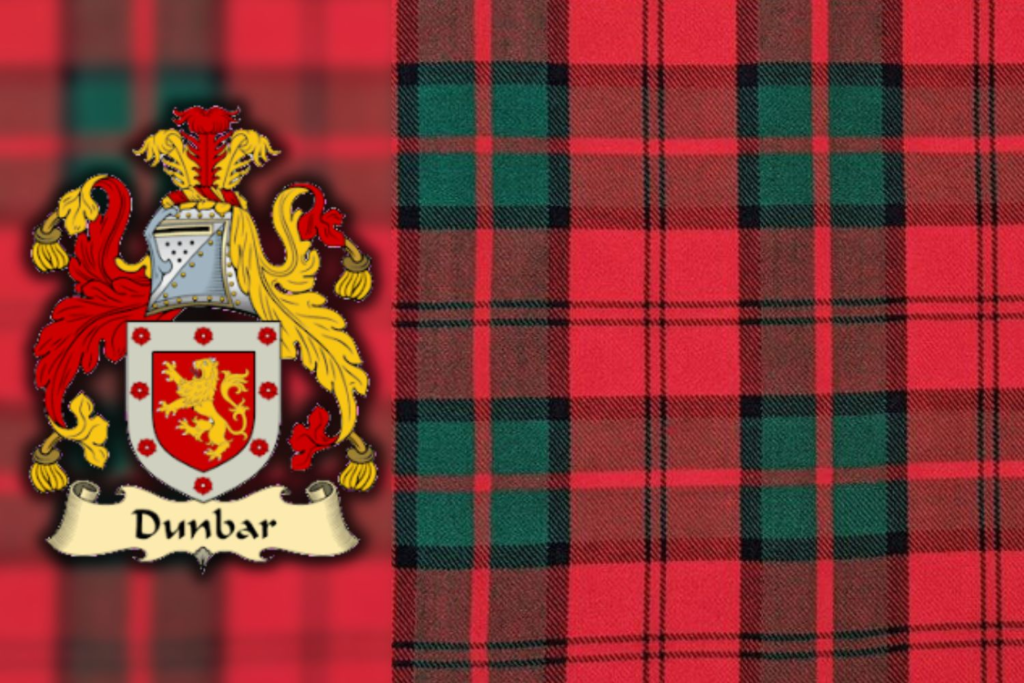Understanding the significance of tartans in Scottish culture is crucial for appreciating the enduring legacy of the Dunbar Clan Tartan. Tartans, with their distinctive patterns and colors, have long served as symbols of identity and heritage for Scottish clans and families. Within this rich tapestry of tradition, the Dunbar Clan Tartan holds a special place, representing centuries of history and tradition. The Dunbar Clan Tartan, like many other tartans, is deeply rooted in the history of Scotland. Its origins can be traced back to the ancient Celtic tribes that inhabited the region, who used woven cloth to signify membership in a particular clan or tribe. Over time, these simple designs evolved into the intricate tartans we know today, with each clan developing its own unique pattern and colors.
Origins of Clan Tartans
Exploring the origins of tartans in Scotland reveals a fascinating history dating back centuries. The concept of clan tartans is believed to have emerged during the Middle Ages, with evidence suggesting that tartan-like patterns were already in use by the Scottish Gaelic-speaking people by the 16th century. These early tartans were likely simple checkered patterns, with variations in color and design depending on the region and materials available. The role of tartans in identifying clans and families became more pronounced over time, especially during periods of clan warfare and political unrest. Tartans served not only as a means of identification but also as symbols of allegiance and loyalty. As the social structure of Scotland evolved, so too did the significance of tartans, with certain patterns becoming associated with specific clans and families.
The Dunbar Clan: A Brief History
The Dunbar Clan has a rich and storied history that spans centuries. Originally hailing from the eastern coast of Scotland, near the border with England, the Dunbar Clan rose to prominence during the medieval period. They were renowned for their military prowess and played a significant role in Scottish politics and warfare. The earliest recorded mention of the Dunbar Clan dates back to the 12th century when they were granted lands in Lothian by King David I of Scotland. Over the centuries, the Dunbars expanded their influence, acquiring additional lands and titles through alliances and strategic marriages. They were staunch supporters of the Scottish crown and played a key role in defending Scotland against English aggression.
Evolution of Dunbar Clan Tartan
The Dunbar Clan Tartan has undergone several transformations over the centuries, reflecting changes in fashion, technology, and social customs. Like other tartans, its design is influenced by the natural landscape of Scotland, with earthy tones and bold patterns evoking the rugged beauty of the Scottish countryside. The earliest Dunbar Clan Tartans were likely simple designs, consisting of basic checks or stripes in natural wool colors. As weaving techniques improved and new dyes became available, tartans became more elaborate, with intricate patterns and vibrant colors. The modern Dunbar Clan Tartan is a testament to this evolution, featuring a distinctive pattern of greens, blues, and browns that symbolize the clan’s connection to the land and sea.
Symbolism and Meaning
Interpretation of colors and patterns in the Dunbar Clan Tartan reveals deeper layers of symbolism and meaning. Each color represents different aspects of Scottish heritage and tradition, with greens symbolizing the lush landscape, blues representing the clear waters of the lochs, and browns evoking the rugged terrain of the Highlands. The pattern itself is thought to reflect the resilience and strength of the Dunbar Clan, with its bold lines and geometric shapes symbolizing unity and solidarity. For members of the clan, wearing the tartan is more than just a fashion statement; it is a proud declaration of their identity and heritage, connecting them to generations of ancestors who have worn the same tartan before them.
Cultural Significance
The Dunbar Clan Tartan holds significant cultural importance for Scots around the world, serving as a powerful symbol of Scottish identity and pride. Whether worn as part of traditional Highland dress or incorporated into modern fashion and design, the tartan serves as a tangible link to Scotland’s rich cultural heritage. In addition to its symbolic significance, the Dunbar Clan Tartan plays a practical role in preserving and promoting Scottish culture. Through festivals, gatherings, and cultural events, Scots celebrate their heritage by proudly displaying their clan tartans, keeping alive traditions that have been passed down through generations.
Modern Applications
Despite its ancient origins, the Dunbar Clan Tartan remains relevant in the modern world, finding new applications in fashion, design, and branding. From tartan kilts and scarves to tartan-lined jackets and accessories, the tartan continues to inspire designers and artists around the world. In recent years, there has been a resurgence of interest in traditional Scottish tartans, driven in part by a growing appreciation for heritage and craftsmanship. Tartan-themed products have become popular souvenirs for tourists visiting Scotland, while fashion designers have incorporated tartan patterns into their collections, adding a touch of Scottish flair to contemporary styles.
Preservation Efforts
Efforts to preserve and protect traditional tartans have become increasingly important in an era of globalization and mass production. Organizations such as the Scottish Tartans Authority work tirelessly to catalog and authenticate tartan designs, ensuring that they remain true to their historical roots. Through education and outreach programs, these organizations aim to raise awareness about the cultural significance of tartans and promote their continued use and appreciation. By supporting traditional weavers and artisans, they help ensure that the art of tartan-making remains alive for future generations to enjoy.
Challenges and Controversies
Despite its enduring popularity, the tartan industry faces several challenges and controversies in the modern era. One of the most significant issues is the debate over authenticity and trademarking of tartan designs. While some argue that tartans should be protected as cultural heritage, others see them as commercial products to be trademarked and sold for profit. Another contentious issue is the debate over cultural appropriation versus appreciation. As tartans become more popular worldwide, some Scots worry that their cultural heritage is being commodified and diluted, while others welcome the opportunity to share their traditions with a global audience.
Celebrations and Events
Throughout Scotland and beyond, there are numerous festivals and events that celebrate the rich cultural heritage of tartans. From Highland games to tartan parades, these gatherings provide an opportunity for Scots to come together and celebrate their shared identity. One of the most famous tartan festivals is the Highland Games, which take place annually in cities and towns across Scotland. These events feature traditional Scottish sports such as caber tossing and hammer throwing, as well as music, dance, and other cultural activities.

The Significance of Scottish Tartan
Scottish tartan is a distinctive textile pattern that symbolizes Scottish heritage and clan identity. Characterized by its unique color combinations and intricate woven designs, Scottish tartan serves as a visual representation of the rich history and traditions of Scotland. Each tartan pattern is associated with specific clans, families, or regions, providing a sense of belonging and pride to those who wear it. Beyond its cultural significance, Scottish tartan is celebrated globally for its aesthetic appeal and is widely used in fashion, accessories, and home decor, ensuring its continued relevance and admiration worldwide.
Global Recognition
The Dunbar Clan Tartan, like many other tartans, enjoys recognition and popularity beyond the shores of Scotland. From the United States to Japan, tartan-themed products can be found in shops and boutiques around the world, catering to a global audience eager to embrace Scottish culture. This global recognition is a testament to the enduring appeal of tartans and their ability to transcend cultural boundaries and capture the imagination of people from all walks of life. Whether worn as a fashion statement or displayed as a symbol of heritage, tartans like the Dunbar Clan Tartan serve as ambassadors for Scottish culture on the world stage.
Tourism and Economic Impact
The popularity of tartans, including the Dunbar Clan Tartan, has a significant impact on Scotland’s tourism industry and economy. Tartan-related tourism attracts visitors from around the globe who are eager to explore Scotland’s rich cultural heritage. Tourists often visit historic sites associated with Scottish clans, such as Dunbar Castle, to learn more about the history and traditions of the Dunbar Clan. They also seek out tartan-themed experiences, such as tartan weaving demonstrations and visits to tartan mills, where they can witness the craftsmanship behind these iconic textiles. In addition to tourism, tartans contribute to Scotland’s economy through the sale of tartan merchandise and souvenirs. From tartan kilts and scarves to tartan-covered notebooks and mugs, the market for tartan-themed products is thriving, providing employment opportunities for artisans and craftsmen across Scotland.
Legacy and Heritage
As Scotland continues to evolve in the 21st century, the legacy of tartans like the Dunbar Clan Tartan remains as vibrant as ever. These timeless symbols of Scottish heritage serve as a link between the past and the present, connecting Scots around the world to their ancestral roots. By preserving and promoting tartan traditions, Scots ensure that future generations will continue to embrace their cultural heritage with pride and reverence. Whether worn on special occasions or displayed as a cherished family heirloom, tartans like the Dunbar Clan Tartan will always hold a special place in the hearts of Scots everywhere.
Conclusion
In conclusion, the Dunbar Clan Tartan plays a vital role in preserving and promoting Scottish culture and heritage. From its ancient origins to its modern-day applications, the tartan serves as a powerful symbol of identity and pride for members of the Dunbar Clan and Scots around the world. As we celebrate the enduring legacy of tartans, let us remember the rich history and traditions that they represent. By embracing our cultural heritage and sharing it with others, we ensure that tartans like the Dunbar Clan Tartan will continue to inspire and unite us for generations to come.
Unique FAQs
1. Is the Dunbar Clan Tartan only worn by members of the Dunbar Clan?
– While traditionally associated with the Dunbar Clan, the tartan can be worn by anyone with an appreciation for Scottish heritage.
2. Are there specific occasions when wearing the Dunbar Clan Tartan is customary?
– Many Scots choose to wear their clan tartans during special events such as weddings, Highland games, or other cultural gatherings.
3. Can I purchase Dunbar Clan Tartan merchandise?
– Yes, various retailers offer Dunbar Clan Tartan products, including kilts, scarves, and accessories.
4. How can I learn more about the history of the Dunbar Clan?
– There are numerous resources available, including books, websites, and historical societies dedicated to Scottish genealogy.
5. Is it appropriate for non-Scots to wear the Dunbar Clan Tartan?
– While some may debate the issue, many Scots welcome the appreciation of their culture and see wearing tartan as a gesture of respect.



